Ghritkumari Health Benefits: How to Make Aloe Vera Gel at Home
In the realm of natural remedies and holistic health, few plants command as much attention and admiration as Ghritkumari, also known as Aloe vera. This succulent wonder has been cherished for centuries across various cultures for its remarkable properties and versatile applications. In this comprehensive guide, we delve into the depths of Ghritkumari’s enchanting qualities, its historical significance, and its remarkable benefits for the mind, body, and soul.
What is Ghritkumari?
Ghritkumari, scientifically known as Aloe vera, is a succulent plant that belongs to the Asphodelaceae family. It boasts a distinctive appearance with its fleshy leaves that hold a gel-like substance known for its myriad health benefits. Originating in the India and arid regions of North Africa, Aloe vera has transcended borders and found its way into homes and wellness practices worldwide.
The Nutrient Profile and Useful Parts of Ghritkumari
Ghritkumari’s allure lies in its rich nutrient profile. The inner gel of Aloe vera leaves is where the magic happens. This translucent gel is a powerhouse of nutrients, including vitamins A, C, and E, as well as B vitamins like B1, B2, B3, and B6. Additionally, Aloe vera gel contains minerals such as calcium, magnesium, zinc, and selenium. Enzymes like amylase and lipase aid in digestion and promote overall gut health. Additionally, it contains a plethora of antioxidants that combat oxidative stress, promoting youthful vitality.
The leaves of Aloe vera are the primary source of its precious gel. To harness this gel, one needs to carefully extract it from the leaf’s inner layers. This gel, with its translucent appearance, is packed with goodness and serves as the foundation for Ghritkumari’s numerous applications.
Qualities of Ghritkumari & Influence on Doshas According to Ayurveda
- In Ayurvedic philosophy, Ghritkumari is considered a cooling plant with a bitter taste.
- Ghritkumari is celebrated for its tridoshic nature, meaning it balances all three doshas – Vata, Pitta, and Kapha. This remarkable attribute makes it a valuable addition to holistic health routines.
- Aloe vera’s cooling properties pacify Pitta.
- Its moisturizing essence soothes Vata.
- Its cleansing attributes balance Kapha.
- Ayurvedic texts speak highly of Ghritkumari’s ability to bring harmony to our internal energies. Ayurvedic practitioners recommend Ghritkumari to soothe inflammation, support digestion, and promote a harmonious balance among the body’s energies.

Health Benefits of Ghritkumari
The spectrum of health benefits offered by Ghritkumari is nothing short of astonishing. From skin care to digestive health, it emerges as a versatile companion in our pursuit of well-being.
1. Skin Health and Healing
Ayurveda acknowledges Ghritkumari’s exceptional ability to promote skin health and healing. Its gel’s soothing and moisturizing properties make it a go-to remedy for various skin issues. From minor burns and irritations to dryness and acne, Aloe vera’s natural enzymes and antioxidants facilitate tissue repair and rejuvenation, aligning with Ayurveda’s emphasis on external nourishment.
2. Wound Healing
Aloe vera’s gel is a powerful ally in wound healing. Its natural enzymes stimulate tissue repair, aiding in the closure of wounds and minimizing scar formation. The gel’s soothing properties create a protective barrier over wounds, preventing infection and promoting faster healing, reflecting its historical use as a battlefield remedy.
3. Digestive Aid
Ayurveda places great importance on a well-functioning digestive system. Ghritkumari’s internal benefits shine in this aspect. Aloe vera juice, when consumed in moderation, aids digestion and soothes the gastrointestinal tract. Its enzymes support nutrient absorption and promote regular elimination, mirroring Ayurveda’s focus on internal balance for overall wellness.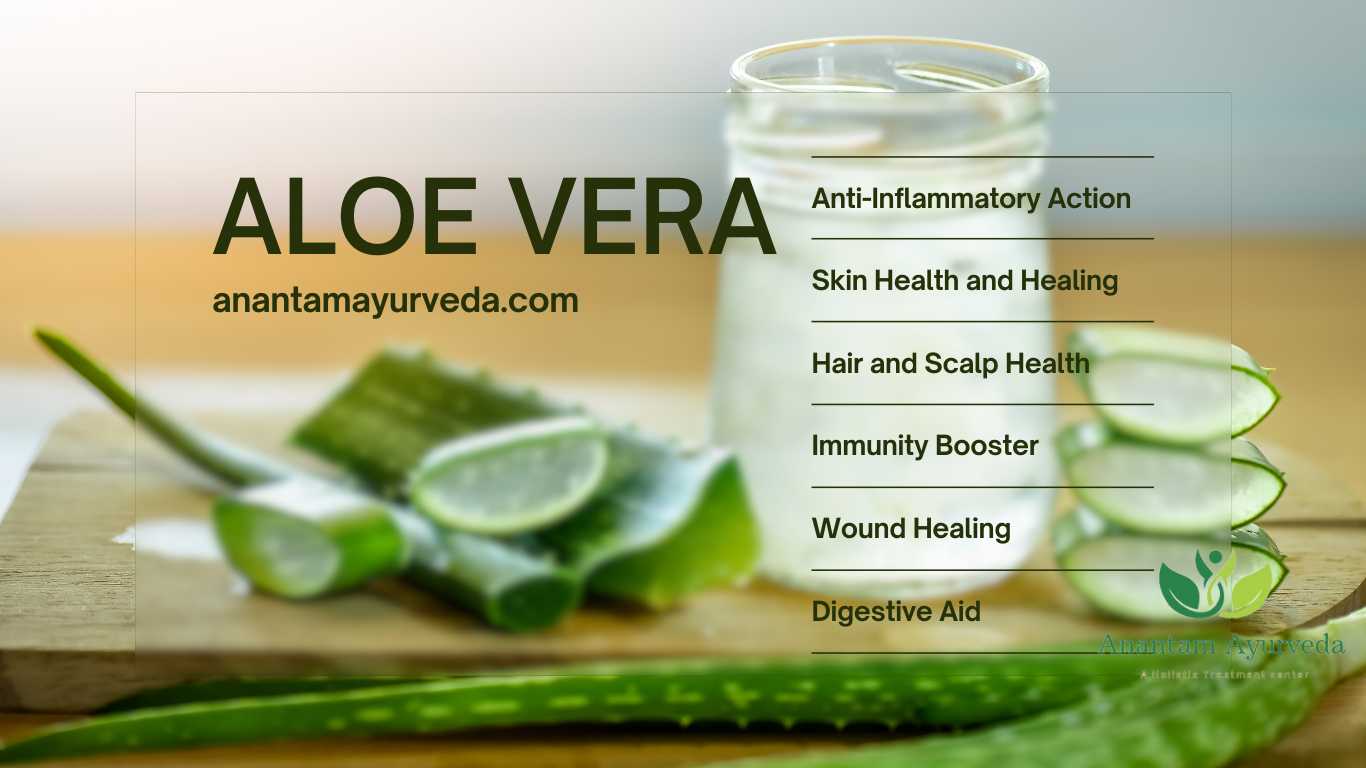
4. Immunity Booster
In Ayurveda, a robust immune system is considered a cornerstone of good health. Ghritkumari’s abundant antioxidants, including vitamins A, C, and E, bolster the body’s defense against oxidative stress and harmful pathogens. Strengthening immunity aligns with Ayurveda’s approach to enhancing the body’s inherent ability to resist diseases.
5. Hair and Scalp Health
Ayurveda recognizes that healthy hair reflects overall vitality. Ghritkumari’s qualities extend to hair care. Its enzymes promote a healthy scalp and lustrous hair. Whether applied topically as a hair mask or included in natural hair care remedies, Aloe vera’s contribution to hair health resonates with Ayurveda’s emphasis on nurturing both external and internal well-being.
6. Anti-Inflammatory Action
Inflammation is a precursor to many health issues, according to Ayurveda. Ghritkumari’s anti-inflammatory properties offer a natural solution to combat inflammation. Whether applied topically or consumed internally, Aloe vera’s ability to reduce inflammation aligns with Ayurveda’s goal of maintaining a balanced and harmonious internal environment.
7. Detoxification Support
Ayurveda places great emphasis on regular detoxification to maintain optimal health. Ghritkumari aids in this process by supporting digestion, elimination, and liver function. Its natural cleansing properties assist in removing toxins from the body, aligning with Ayurvedic principles of promoting internal purity.
Aloe Vera Medicinal Uses
The medicinal uses of Aloe vera are diverse and impressive. Its natural anti-inflammatory and antimicrobial properties make it effective for treating skin conditions like eczema, psoriasis, and acne. Aloe vera gel can also be used topically to soothe sunburns, insect bites, and minor cuts.
How to Use Ghritkumari
Ghritkumari, known as Aloe vera, is a treasure trove of wellness in Ayurveda, the ancient science of holistic health. Its versatile qualities offer a multitude of ways to incorporate it into daily routines for optimal well-being. Let’s explore how to harness the potential of Ghritkumari through Ayurvedic practices.
1. Aloe Vera Gel
External Application: Extract the gel from Aloe vera leaves and apply it topically on the skin. For minor burns, cuts, rashes, or acne, gently massage the gel onto the affected area. Its soothing and healing properties provide relief and aid in skin rejuvenation.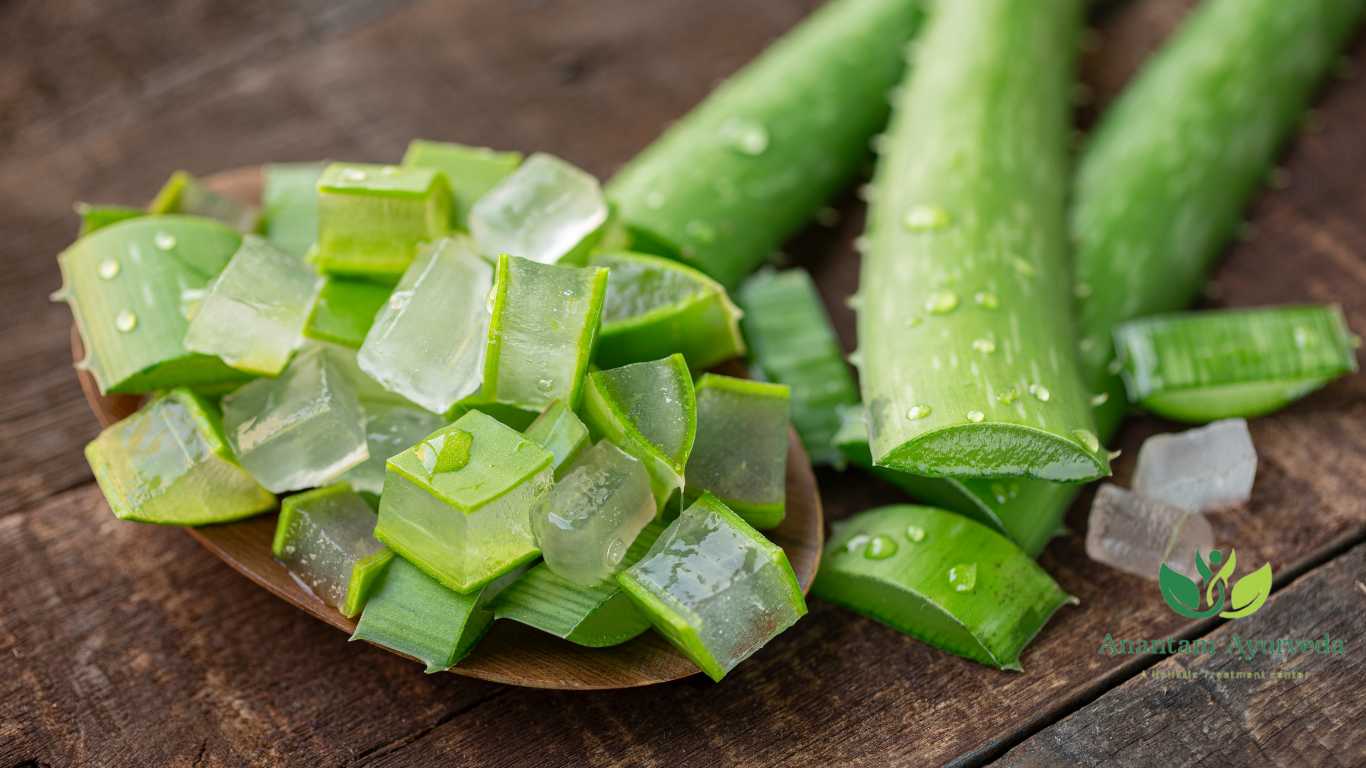
2. Aloe Vera Juice
Internal Consumption: Aloe vera juice offers a host of internal benefits. Start with a small amount (about 1-2 tablespoons) and gradually increase. Consume it on an empty stomach for digestive support, detoxification, and immunity enhancement. Be cautious of the quantity, as excessive consumption might lead to digestive discomfort.
3. Aloe Vera Infused Oils
Massage and Skincare: Combine Aloe vera gel with carrier oils like coconut or sesame oil to create infused oils. Massage these oils onto the body to nourish the skin, promote circulation, and relax the muscles. Aloe vera’s qualities enhance the efficacy of the massage.
4. Aloe Vera Face Masks
Skincare Ritual: Mix Aloe vera gel with natural ingredients like honey, turmeric, or yogurt to create homemade face masks. Apply these masks for a refreshing skincare ritual that cleanses, exfoliates, and nourishes the skin.
5. Oral Health:
Mouthwash: Aloe Vera’s antimicrobial properties make it an excellent ingredient for a natural mouthwash. Dilute Aloe Vera juice with water and use it as a mouth rinse to promote oral hygiene.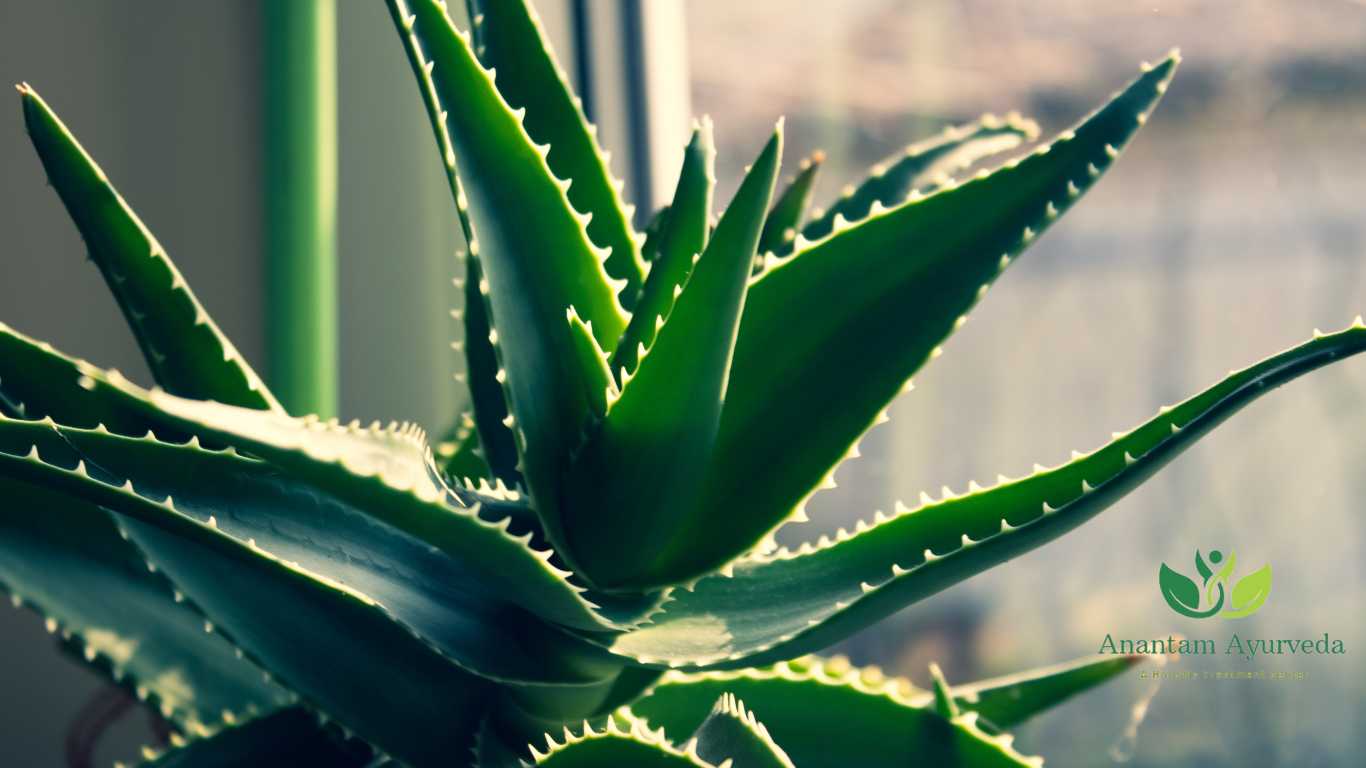
6. Aloe Vera Supplements
Capsules and Tablets: Opt for Aloe vera supplements in capsule or tablet form for convenient consumption. These supplements often come with standardized doses, making it easier to incorporate Aloe vera’s benefits into your daily routine.
7. Aloe Vera Hair Care
Scalp and Hair Health: Create hair masks by blending Aloe vera gel with natural ingredients like amla powder, hibiscus, or coconut milk. Apply the mixture to the scalp and hair for nourishment, hydration, and promoting healthy hair growth.
8. Aloe Vera in Ayurvedic Formulations
Consult an Ayurvedic Practitioner: Explore Aloe vera-infused Ayurvedic formulations like rasayanas, churnas, and oils under the guidance of an Ayurvedic practitioner. These formulations are tailored to individual constitutions and health goals.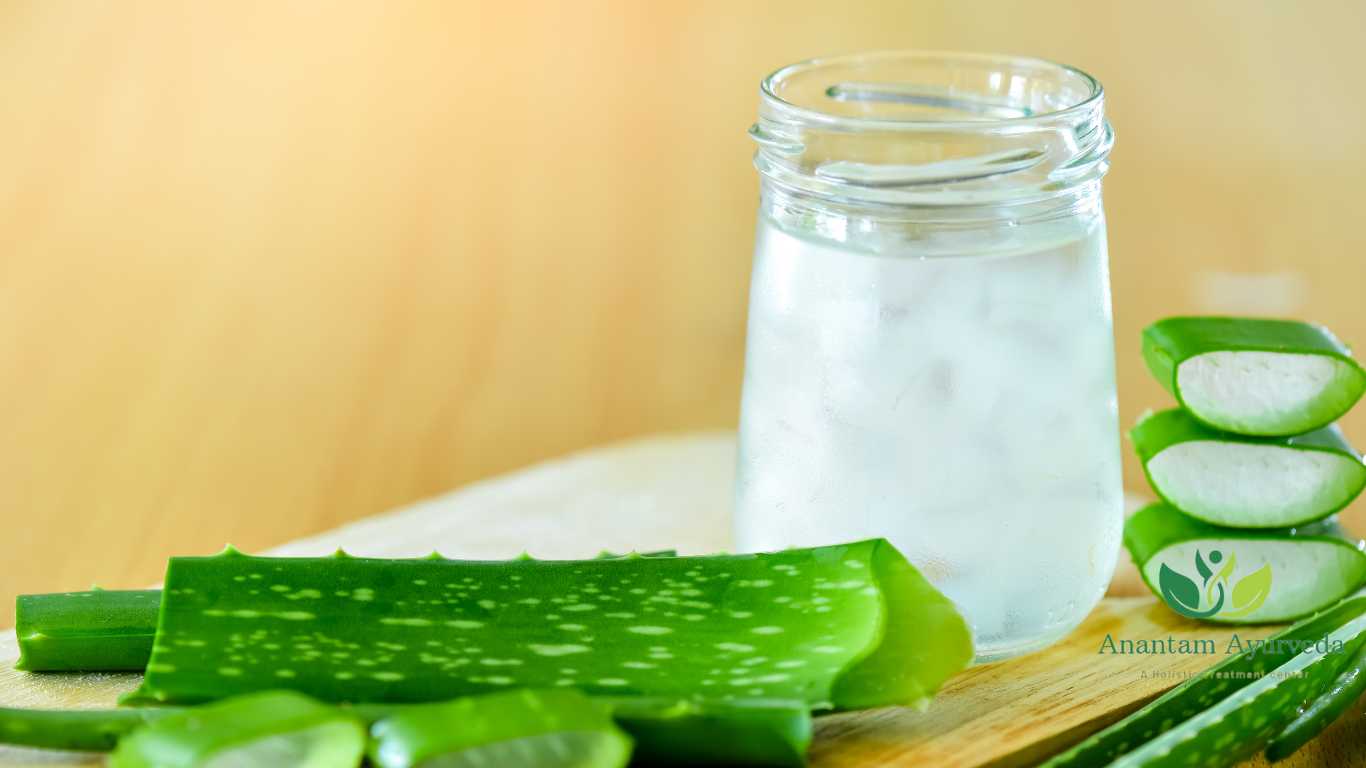
9. Balancing Doshas:
Vata: Aloe Vera’s moisturizing properties are beneficial for pacifying Vata dosha. Apply Aloe Vera gel to dry skin and include it in your skincare routine.
Pitta: Aloe Vera’s cooling quality is ideal for soothing Pitta imbalances. Use it to calm irritated skin or as a cooling hair treatment.
Kapha: Aloe Vera’s cleansing properties support Kapha balance. Consume Aloe Vera juice to aid digestion and eliminate excess Kapha.
10. Consultation with an Ayurvedic Practitioner
Guidance and Recommendations: Before integrating Aloe vera into your Ayurvedic routine, consider consulting an Ayurvedic practitioner. They can provide personalized guidance based on your constitution, imbalances, and health goals.
Safety and Precautions
While Ghritkumari is a treasure trove of benefits, it’s essential to exercise caution:
1. Allergic Reactions: Perform a patch test before applying Aloe vera topically to avoid allergic reactions.
2. Internal Consumption: Consult a healthcare professional before consuming Aloe vera internally, especially if you have underlying health conditions.
How to Make Aloe Vera Gel at Home
Creating Aloe Vera gel at home is a wonderful way to harness the healing power of this succulent wonder. With its soothing and nourishing properties, Aloe Vera gel is a versatile addition to your skincare routine. Here’s a step-by-step guide on how to make fresh Aloe Vera gel from the comfort of your home.
What You’ll Need:
- Aloe Vera leaves
- Sharp knife
- Cutting board
- Bowl
- Spoon
- Blender or food processor (optional)
- Airtight container
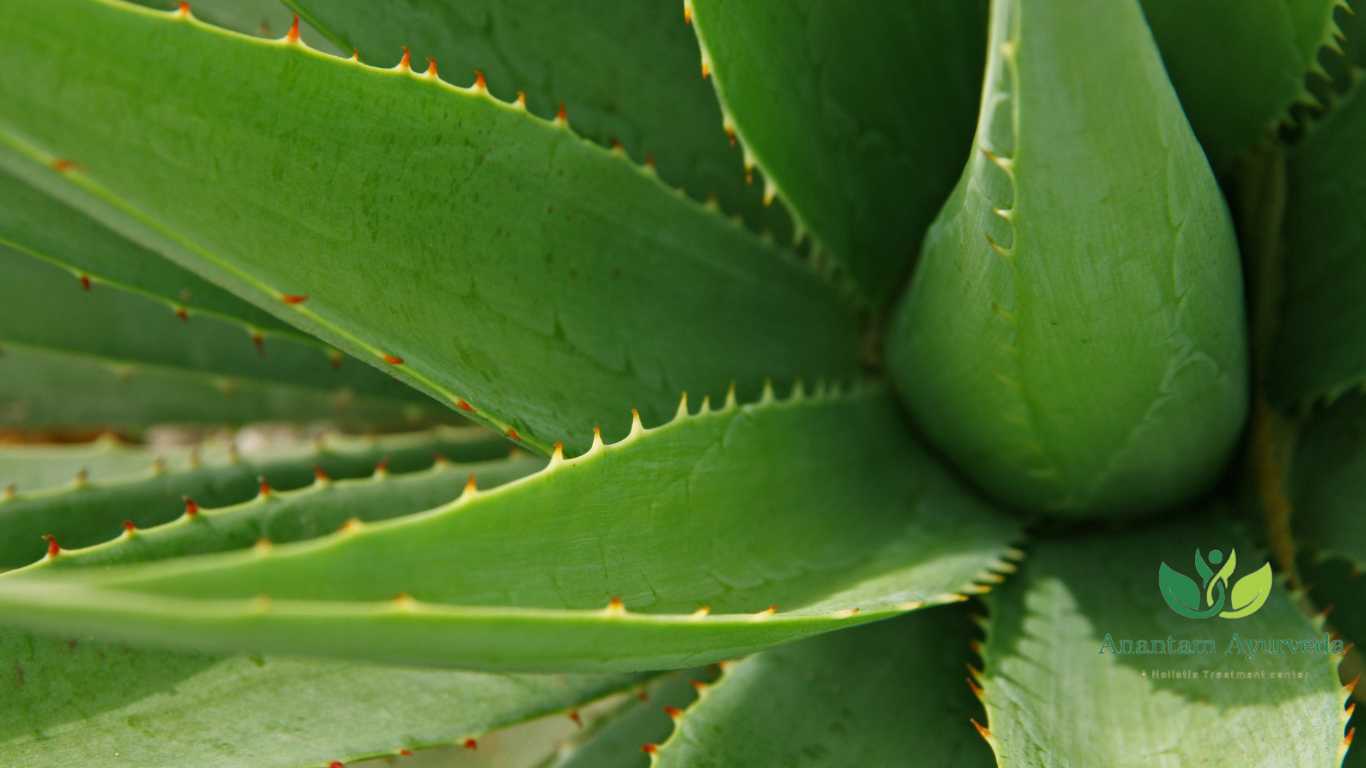
Step-by-Step Instructions:
- Select Fresh Leaves: Choose mature Aloe Vera leaves that are plump and free from blemishes. These leaves contain the most gel.
- Preparation: Wash the leaves thoroughly to remove any dirt or debris. Place them upright in a container for about 15-20 minutes. This allows the yellow resin, known as aloin, to drain away. Aloin can cause skin irritation, so this step is important.
- Peel the Leaves:
- Lay the leaf flat on a cutting board.
- Trim off the thorny edges on both sides using a sharp knife.
- Cut the leaf into sections for easier handling.
- Extract the Gel:
- Hold a leaf section and make a lengthwise cut on one side, being careful not to cut through the back of the leaf.
- Use the knife to gently separate the outer green layer from the clear inner gel. The gel resembles translucent jelly.
- Collect the gel in a bowl. Repeat this process for all the leaf sections.
- Rinse the Gel:
- Once you’ve extracted all the gel, rinse it under cold water to remove any residue of aloin or sap.
- Blend the Gel (Optional):
- If you prefer a smoother gel consistency, you can blend the extracted gel in a blender or food processor until it becomes smooth and homogeneous.
- Storage:
- Transfer the gel to a clean, airtight container. You can use a glass jar or a plastic container.
- Store the container in the refrigerator to extend the shelf life of the gel.
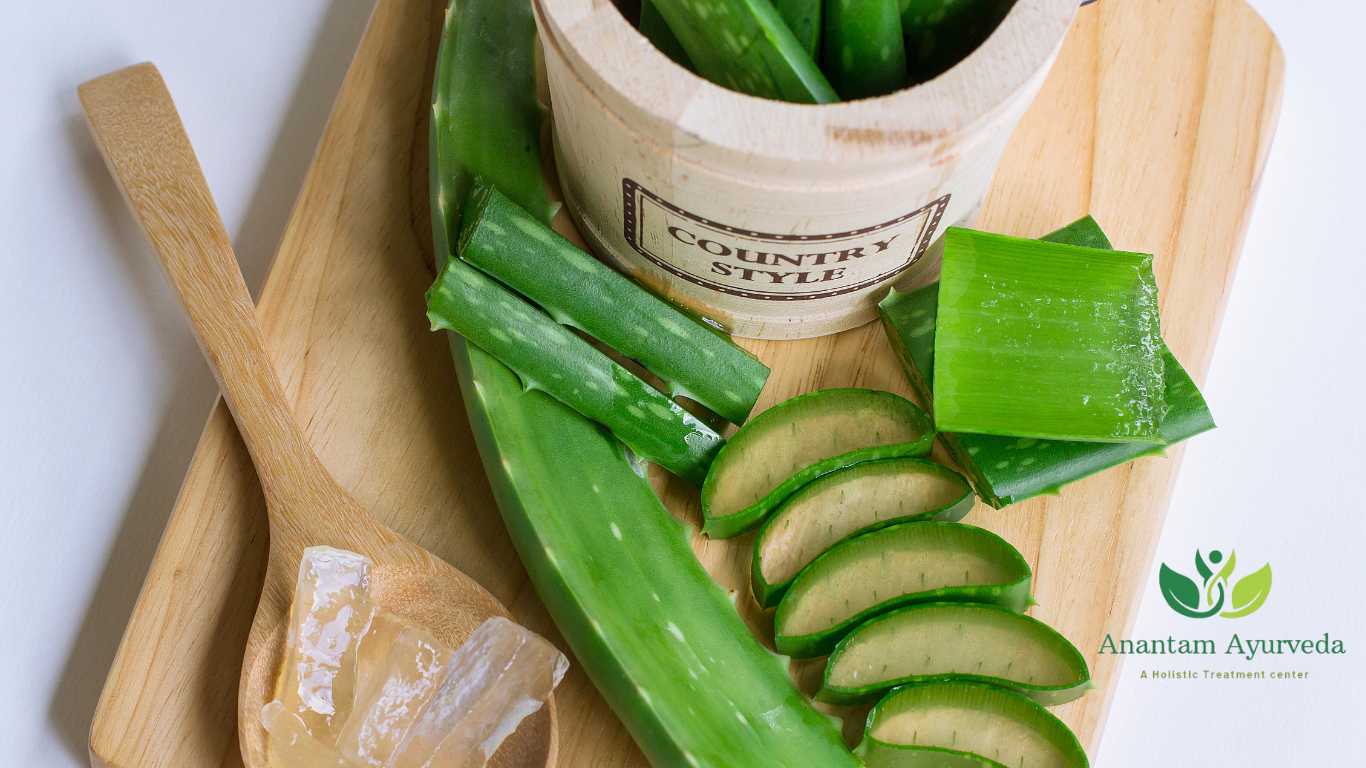
Tips and Usage:
- Patch Test: Before applying the gel to your skin, do a patch test to ensure you don’t have any adverse reactions.
- Expiration: Fresh Aloe Vera gel can last for about a week in the refrigerator. Adding a natural preservative like vitamin E oil can help extend its shelf life.
- Application: Apply the Aloe Vera gel as needed to soothe and moisturize your skin. It’s great for sunburns, irritations, dry skin, and minor cuts.
- Internal Use: If you plan to consume Aloe Vera gel, ensure that you consult a healthcare professional, as some people may experience digestive discomfort.
Making Aloe Vera gel at home allows you to experience the benefits of this natural elixir directly from the plant. Remember to prioritize safety, cleanliness, and quality to ensure the best results for your skin and well-being.
You can follow us on twitter, facebook, instagram & Google News

👌👌👌👌